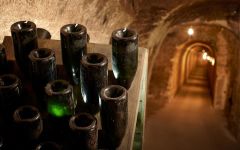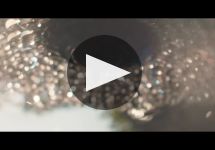Pol Roger Brut Rose 2006
-
Robert
Parker -
Wine
Enthusiast -
James
Suckling -
Wine
Spectator




Product Details
Your Rating
Somm Note
Winemaker Notes
Blend: 65% Pinot Noir, 35% Chardonnay.
Professional Ratings
-
Robert Parker's Wine Advocate
The salmon color of the 2006 Rosé Brut with its pink and orange reflections is already magic and most probably unique. And then comes the nose: less subtle and discreet, but fine and elegant, deep, ripe and fleshy, with raw meat, nougat and licorice flavors intermingled with pure red berry (currant) and cherry aromas. Can you imagine this Rosé is based on the Réserve Brut (60% Pinot Noir, 40% Chardonnay)? It is, but before the bottling and second fermentation, approximately 15% of still red wine (Pinot Noir) from the crus of the Montagne de Reims is added. This extraordinary Rosé Champagne is produced only in limited quantities and has been aged seven years before its release. Medium to full-bodied, smooth and fruit intense on the palate, this is another highly elegant and perfectly balanced Pol Roger fizz with a beautiful Pinot perfume in the finish. This is very sensual though complex Champagne that covers your tongue with pink silk. If you don't mind, I'd prefer to call this an excitingly erotic Champagne that I would love to drink on its own, but in any case not alone.
-
Wine Enthusiast
With its mature orange, onion skin color, this is a soft, toasty wine. It is losing fruit and gaining a wide range of mature flavors while keeping tight acidity. The wine tastes drier than previous vintages, a crisp aftertaste allowing the texture to shine and the more mature elements to develop well. Drink now, although the wine will age longer.
-
James Suckling
A light red, this is a Champagne that has hints of quite mature elements of mushroom, dark grilled nuts and coffee, with fresher lemon and red cherry fruits as well as hints of spice. The palate has a very soft, supple feel to it; smoothly textured and very well balanced. It has plenty now but I'd give it two to three years to find its best and most harmonious stage.
-
Wine Spectator
Bright, with vibrant acidity and a lively, light creamy mousse framing prettily spiced flavors of wild cherry, damson plum, pastry, candied ginger and blood orange granita. Offers a persisitent, spiced finish. Drink now through 2026.
Other Vintages
2018-
James
Suckling -
Robert
Parker -
Wine
Enthusiast
-
Jeb
Dunnuck -
Robert
Parker -
Wine
Spectator -
Wine
Enthusiast
-
James
Suckling -
Robert
Parker -
Wine
Spectator -
Wine
Enthusiast - Decanter
-
James
Suckling -
Robert
Parker
-
Wine
Enthusiast -
James
Suckling -
Wine
Spectator -
Robert
Parker
-
Wine
Spectator -
Tasting
Panel
-
Wine &
Spirits -
Robert
Parker -
Wine
Spectator
-
Wine
Spectator
-
Wine
Spectator
-
Wine
Spectator







Pol Roger is one of the few remaining family-owned grande marque Champagne houses. Their grande marque status was guaranteed at the turn of the century when about 20 producers banded together to establish exacting quality controls for Champagne. The annual production at Pol Roger - less than 120,000 cases - is found in the best restaurants of France, England, and the USA, and is exported to over 30 countries. Pol Roger also was the Champagne of choice of British dignitary Sir Winston Churchill, who once said of Champagne, "...In victory I deserve it, and in defeat I need it!".

What are the different types of sparkling rosé wine?
Rosé sparkling wines like Champagne, Prosecco, Cava, and others make a fun and festive alternative to regular bubbles—but don’t snub these as not as important as their clear counterparts. Rosé Champagnes (i.e., those coming from the Champagne region of France) are made in the same basic way as regular Champagne, from the same grapes and the same region. Most other regions where sparkling wine is produced, and where red grape varieties also grow, also make a rosé version.
How is sparkling rosé wine made?
There are two main methods to make rosé sparkling wine. Typically, either white wine is blended with red wine to make a rosé base wine, or only red grapes are used but spend a short period of time on their skins (maceration) to make rosé colored juice before pressing and fermentation. In either case the base wine goes through a second fermentation (the one that makes the bubbles) through any of the various sparkling wine making methods.
What gives rosé Champagne and sparkling wine their color and bubbles?
The bubbles in sparkling wine are formed when the base wine undergoes a secondary fermentation, which traps carbon dioxide inside the bottle or fermentation vessel. During this stage, the yeast cells can absorb some of the wine’s color but for the most part, the pink hue remains.
How do you serve rosé sparkling wine?
Treat rosé sparkling wine as you would treat any Champagne, Prosecco, Cava, and other sparkling wine of comparable quality. For storing in any long-term sense, these should be kept at cellar temperature, about 55F. For serving, cool to about 40F to 50F. As for drinking, the best glasses have a stem and a flute or tulip shape to allow the bead (bubbles) and beautiful rosé hue to show.
How long do rosé Champagne and sparkling wine last?
Most rosé versions of Prosecco, Champagne, Cava or others around the “$20 and under” price point are intended for early consumption. Those made using the traditional method with extended cellar time before release (e.g., Champagne or Crémant) can typically improve with age. If you are unsure, definitely consult a wine professional for guidance.

Associated with luxury, celebration, and romance, the region, Champagne, is home to the world’s most prized sparkling wine. In order to bear the label, ‘Champagne’, a sparkling wine must originate from this northeastern region of France—called Champagne—and adhere to strict quality standards. Made up of the three towns Reims, Épernay, and Aÿ, it was here that the traditional method of sparkling wine production was both invented and perfected, birthing a winemaking technique as well as a flavor profile that is now emulated worldwide.
Well-drained, limestone and chalky soil defines much of the region, which lend a mineral component to its wines. Champagne’s cold, continental climate promotes ample acidity in its grapes but weather differences from year to year can create significant variation between vintages. While vintage Champagnes are produced in exceptional years, non-vintage cuvées are produced annually from a blend of several years in order to produce Champagnes that maintain a consistent house style.
With nearly negligible exceptions, . These can be blended together or bottled as individual varietal Champagnes, depending on the final style of wine desired. Chardonnay, the only white variety, contributes freshness, elegance, lively acidity and notes of citrus, orchard fruit and white flowers. Pinot Noir and its relative Pinot Meunier, provide the backbone to many blends, adding structure, body and supple red fruit flavors. Wines with a large proportion of Pinot Meunier will be ready to drink earlier, while Pinot Noir contributes to longevity. Whether it is white or rosé, most Champagne is made from a blend of red and white grapes—and uniquely, rosé is often produce by blending together red and white wine. A Champagne made exclusively from Chardonnay will be labeled as ‘blanc de blancs,’ while ones comprised of only red grapes are called ‘blanc de noirs.’
